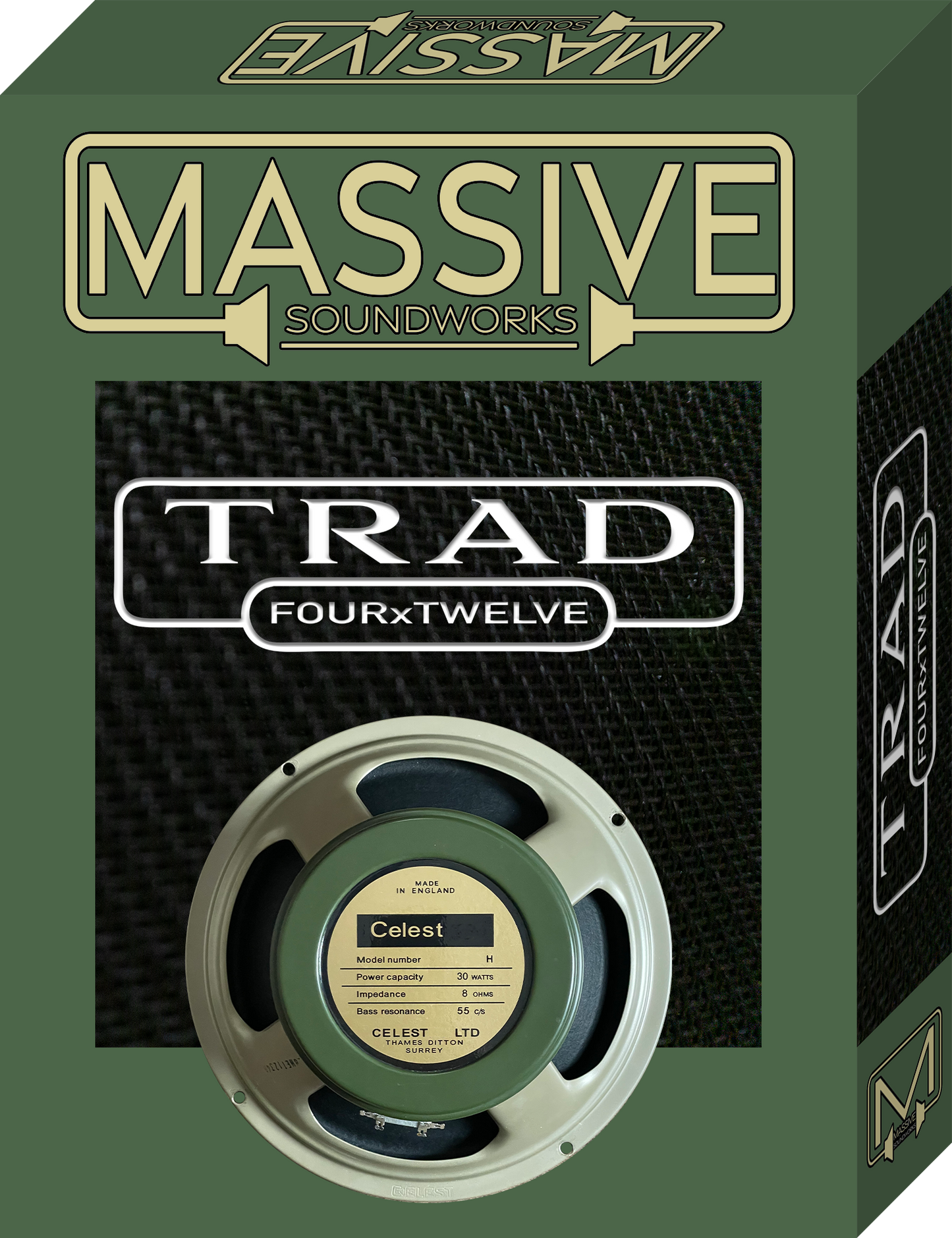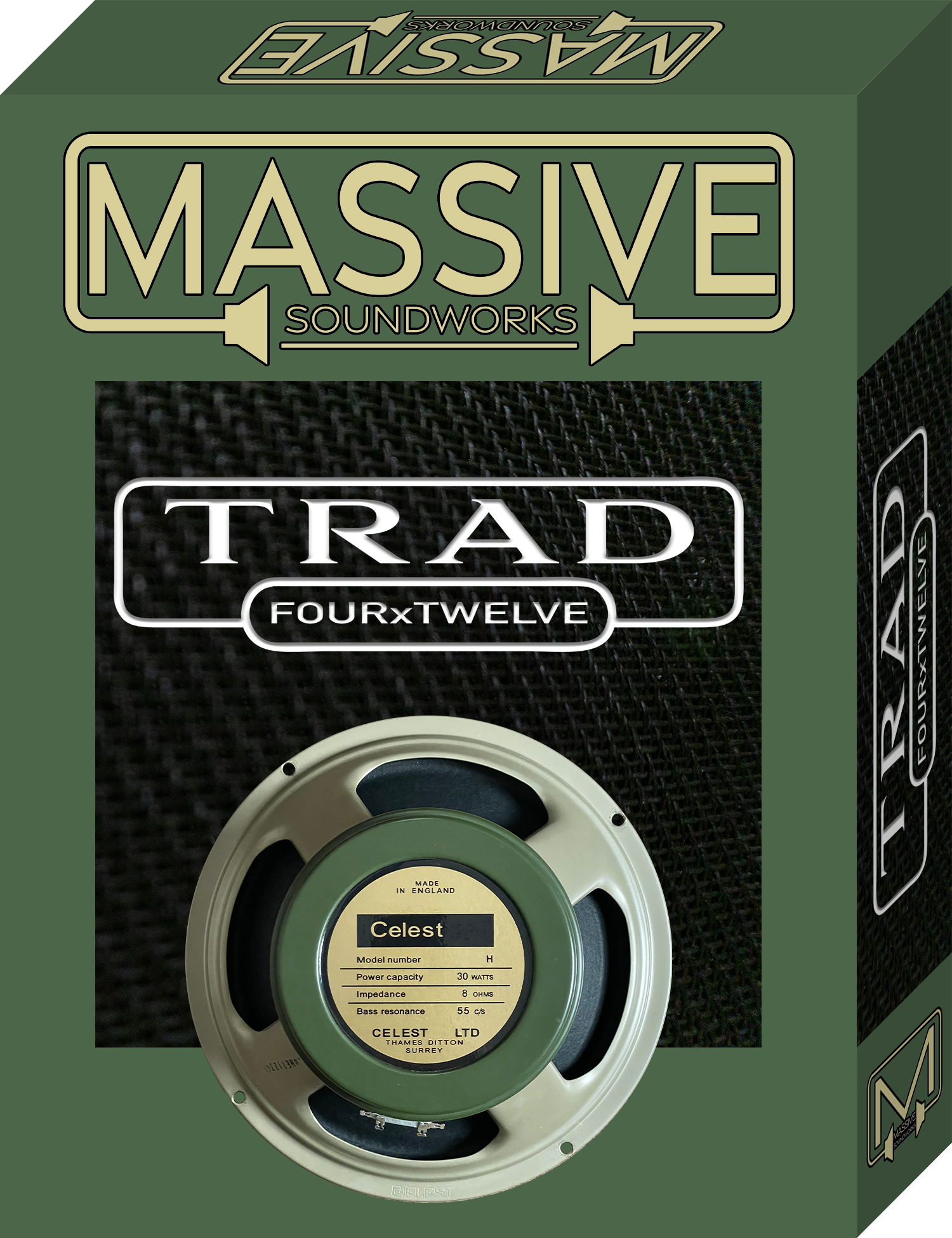Massive Soundworks
TRAD 412 H55 GrnBck
Couldn't load pickup availability
WHAT YOU GET:
- The absolute finest impulse responses available today
- Multiple formats: 32bit/96k, 24bit/96k, 24bit/48k, 16bit/44.1k
- Each microphone in 6 positions across the speaker
- Each microphone in multiple sweet spots
- 8 pre-mixed popular microphone combinations
- Additional pre-processed sweet spots and mixes specifically designed for live use
- Additional Minimum Phase Transformed (MPT) versions of everything for use with other companies’ IRs
THE SPEAKER:
Tone Guide: Big and full of rich low mids. Smooth and creamy in the highs. Lower bass resonance than most guitar speakers.
Here we have captures of a Celestion Heritage G12H 55Hz Greenback® speaker. This speaker was originally designed as a bass guitar speaker. Then players like Jimi Hendrix came along and turned what the world knew as guitar tone on it's head. Jimi used this speaker to reproduce the thick low end and creamy midrange that helped define an era. If you want classic 60's tone. This is it. In modern productions our H55 really shines on big distorted chords. It's also an outstanding choice as a foundation to build upon with multiple mics and speakers.
THE CABINET:
These are impulse responses captured using a MESA Engineering Rectifier ® 4x12 Traditional Cabinet. This is widely regarded as a must-have studio cabinet for its ultra tight bottom end and cutting, yet smooth upper midrange. This is the cabinet most often used in modern metal by the genre’s top producers.
THE MICROPHONES:
- Shure SM57 (x2 on/off-axis, and Fredman technique)
- Royer R121
- Beyerdynamic M160
- AKG C414 XLS
- Sennheiser MD421
- Sennheiser e906
- Audio Technica AE2500 Dual-Capsule Microphone
- Rode NTR
Each microphone is captured in 6 positions across the cone in addition to multiple sweet spots, curated by listening, moving microphones, capturing, re-capturing, and re-re-capturing, until perfect.
THE MASSIVE DIFFERENCE:
No time or expense is spared in creating MASSIVE impulse responses. The best in modern and vintage microphones feed the finest cabling into boutique analog preamps selected on a per-speaker basis. The signal is then converted using our world-class A/D into the digital realm at 32 bit floating point, 96k, where it remains throughout processing until conversion into the multiple formats included in the collection


